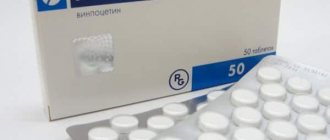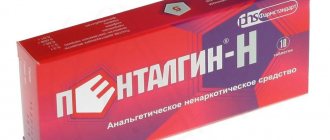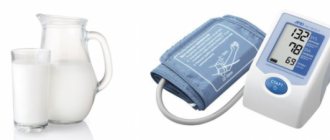Composition and release form
The name of the active substance is meldonium. Mildronate is available in several forms to make it easier to use.
Capsules
This form has two doses - 250 and 500 milligrams of meldonium dihydrate. The capsule shell is white, dense, and inside there is fine powder in the form of white crystals. Additional ingredients: starch, calcium stearate, silicon dioxide. Capsule material: gelatin.
They are in blisters, packed in boxes of 40, 60 capsules.
Solution
Mildronate is available in ampoules for parenteral administration. The ampoule size is 5 milliliters. The volume of meldronnium is 100 milligrams per gram. Packaged in boxes of 10 pcs.
Mildronate syrup (250 milligrams) and Mildronate GX tablets (500 milligrams) are also produced.
Indications for use
This drug was developed during the Soviet Union in Latvia. Its effectiveness and safety are not recognized by the global pharmaceutical community. Clinical trials were conducted in the USSR that confirmed all the properties of Mildronate in accordance with evidence-based medicine protocols used for drug research.
For information: the main property of meldronate is the normalization of metabolic processes. This improves the supply and absorption of oxygen by tissues, which is involved in all metabolic reactions.
It also speeds up the removal of waste products and metabolites, which helps protect tissue from damage.
- Antianginal - relieving symptoms of sore throat;
- Cardioprotective - improving the function and condition of the heart muscle;
- Antihypoxic - ensures the delivery and absorption of oxygen;
- angioprotective - improving the condition of the walls of blood vessels, accelerating blood circulation.
These properties of the active ingredient determine its scope of application. Indications for use of mildronate:
- In the complex treatment of cardiac pathologies - ischemia, heart failure, angina pectoris, myocardial infarction, cardiomyopathy;
- cerebrovascular accidents - acute and chronic forms;
- Needs support from the body under heavy loads of any nature - mental, nervous, physical;
- in the treatment of alcoholism;
- bronchial asthma;
- during the treatment of ophthalmological pathologies - retinopathy, hemorrhages and others.
Meldonium is able to constrict blood vessels, so it is used for hypertension as an adjuvant. High blood pressure is accompanied by rapid heartbeat, which mildronate effectively fights due to its antihypoxic properties.
In case of ischemic brain disease, it increases blood flow to the most affected areas. Mildronate improves the contractility of the heart muscle, provides athletes with resistance to heavy loads, as well as a general weakening of the heart muscle.
It is well absorbed by the body, when taken orally - up to 78%.
Experience of using Mildronate in cerebrovascular diseases
N.V. PIZOVA
, MD, PhD, Professor,
Department of Neurology and Medical Genetics with a Course of Neurosurgery, Yaroslavl State Medical Academy In recent years, the results of various clinical studies of drugs that have shown their effectiveness in the treatment of cardiovascular diseases have been published.
The article discusses the results of using the drug Mildronate (meldonium) in the treatment of ischemic brain lesions, provides research data confirming the cytoprotective effect of the drug on a number of pathogenetic factors that determine the death of brain cells during ischemia. Cerebrovascular disease refers to various lesions of the nervous system against the background of atherosclerosis and arterial hypertension. Less commonly, cerebrovascular disorders occur against the background of rheumatism, polyarteritis nodosa, systemic lupus erythematosus, and giant cell arteritis. Ischemic stroke (IS) complicates blood diseases (polycythemia vera, sickle cell anemia, leukemia), congenital heart defects in the stage of decompensation, myocardial infarction, neck vascular injuries, etc. The social significance of cerebrovascular disease is increasing due to the increase in risk factors among the population development of cardiovascular pathology: old age, sedentary and sedentary lifestyle, high-calorie diet, obesity, diabetes mellitus, arterial hypertension, hypercholesterolemia, dyslipoproteinemia. The widespread use of smoking and oral contraceptives has virtually equalized the risks of developing cerebrovascular accidents in men and women. In the last decade of the 20th century there was a significant increase in the number of patients with vascular diseases of the brain. In economically developed countries, mortality from such diseases ranks 2nd-3rd in the structure of overall mortality. Over the past 40 years, in countries with high per capita income, the incidence of stroke has increased by 42%, while in countries with middle and low income it has increased by more than 100% [1]. As a result of studies conducted in Russia, it was found that the incidence of stroke is one of the highest among all types of cardiovascular diseases, and the mortality rate from it consistently ranks second in the structure of overall mortality of the population, second only to cardiac pathology. In some regions of Russia, stroke is more common than myocardial infarction. On average, 60% of stroke survivors become disabled, and most of them are dependent on others or require outside care. By the end of the first year after a stroke in Russia, every second patient dies, and after 7 years, almost 80% of patients die [1].
The basis of IS therapy is two directions: reperfusion and neuronal protection. Reperfusion is associated with the restoration of blood flow in the ischemic area. Neuronal protection is implemented at the cellular level and is aimed at preventing the death of weakly or almost no longer functioning, but still viable neurons located around the heart attack (the “ischemic penumbra” zone). The main methods of reperfusion are thrombolysis. The main methods of neuroprotection include restoration and maintenance of homeostasis; drug protection of the brain and non-drug methods such as hyperbaric oxygenation, cerebral hypothermia. Antithrombotic drugs, including anticoagulants and antiplatelet agents, are mandatory for all patients who have undergone IS. Neuroprotective therapy is aimed at interrupting or slowing down the sequence of damaging biochemical and molecular processes that can cause irreversible ischemic brain damage.
In recent years, the results of various clinical studies of drugs that have shown their effectiveness in the treatment of cardiovascular diseases have been published. One of these drugs is Mildronate (3-(2,2,2-trimethylhydrazinium) propionate dihydrate; meldonium) - a drug that corrects metabolism and energy supply to tissues, belongs to the group of cytoprotectors/antihypoxants, provides protection and energy supply to various cells of the body in conditions of ischemia and increased load. The largest number of studies and publications are devoted to the effects and results of Mildronate treatment of ischemic brain lesions, which explain the complex effect of Mildronate on a number of pathogenetic factors that determine the death of brain cells during ischemia. We can distinguish two main ways of Mildronate’s influence on the nervous system, which are realized by several parallel mechanisms ( Table 1
).
| Table 1. Mechanism of action of Mildronate |
| Improving cerebral circulation and eliminating the influence of risk factors 1) positive effect on the functional ability of the myocardium; 2) correction of nitric oxide biosynthesis processes: has a positive effect on smooth muscle cells of blood vessels - cholinomimetic effects and systemic vascular reactions by stimulating the formation of γ-butyrobetaine esters and activation of endothelial nitric oxide synthase; 3) participation in the regulation of glucose metabolism: influences diabetes as a risk factor for cerebrovascular accidents and other diseases of the nervous system; 4) participation in lipid metabolism and inhibition of atherosclerosis processes; 5) effect on the aggregation of formed elements and rheological properties of blood. Protecting neurons and promoting neuromodulation 1) influence on neuronal metabolism at the mitochondrial level, ATP utilization, lipid oxidation and glucose uptake; 2) neuroprotective effect by suppressing the formation of free radicals as products of lipid peroxidation, during ischemia, endogenous neurotoxins and xenobiotics; 3) normalization of the expression of proteins involved in the processes of neurodegeneration, inflammation and apoptosis; 4) potentiation of the action of insulin as a hormonal neuroprotector; 5) implementation of anti-edematous and anti-inflammatory mechanisms, especially in the case of brain reperfusion; 6) a hypothetical possible neurotransmissive cholinergic effect in the brain through the formation of γ-butyrobetaine esters that activate acetylcholine receptors. |
The above mechanisms underlie the neuroprotective or protective, as well as neuromodulatory or restorative effects of Mildronate in various pathological conditions in both the central and peripheral nervous systems: in the treatment of acute and chronic cerebrovascular accidents, brain injuries, improvement of cognitive and motor functions in patients who have suffered a stroke, brain injury and chronic cerebrovascular diseases. The positive effect of Mildronate on the activity of the cardiovascular system through a carnitine-dependent mechanism cannot but have a beneficial effect of the drug on cerebral circulation, as the activity of the heart increases, the need of the heart and skeletal muscle for oxygen decreases. At the same time, the nitric oxide-dependent mechanisms of action of the drug are realized and have a positive effect on the functional ability of smooth muscle cells in the walls of blood vessels, including in the brain [2].
One of the first neurological diseases, taking into account the early proven positive effect of Mildronate on the cardiovascular system, were cerebral circulatory disorders. It was experimentally shown that intravenous administration of Mildronate to rabbits with local brain damage at a dose of 25 mg/kg for 14 days caused a more rapid restoration of cerebral blood flow and vascular reactivity, which was accompanied by an accelerated rate of improvement in brain activity [3]. During an experiment on rabbits, using electrodes implanted into the cerebral cortex, thalamus and hypothalamus, the effect of Mildronate on hemodynamics and water-electrolyte balance in these brain structures was studied using a model of cerebrovascular disorders. Prophylactic administration of Mildronate (10 mg/kg, orally) significantly prevented the development of hemodynamic disorders and optimized oxygen balance. At the same time, the severity of cerebral edema also decreased, which the authors of the study explained by improving the rheological properties of blood, microcirculation and known metabolic effects on cell membranes. These effects of Mildronate were enhanced by its simultaneous use with Riboxin [4].
Another experimental work was devoted to measuring cerebral blood flow and oxygen saturation (pO2) in rats with short-term ligation of the common carotid artery (5 min) using laser Doppler flowmeter methods in the frontal cortex and an oxygenation monitor through the lateral ventricle and observation during the reperfusion period (30 min ). The authors showed that after pre-administration (10 minutes before artery ligation) Mildronate at a dose of 200 mg/kg, a protective effect of the drug on reducing blood supply and oxygen supply to the brain was noted compared to the control group receiving saline solution [5].
The first studies of the effect of Mildronate on cerebral circulation in IS were carried out by Vinnichuk S.M. [6], who revealed an improvement in cerebral hemodynamics and restoration of neurological functions after intravenous administration of Mildronate (5 ml of 10% solution) for 10 days followed by oral administration of 250 mg daily for 2-3 weeks. Other authors [7] observed positive effects even with a single administration of the drug (25 mg/kg, intramuscularly) in the form of improvement in cerebrovascular reactivity around the site of ischemic brain damage.
Russian scientists conducted an extensive study of the clinical effectiveness and antioxidant activity of Mildronate [8]. The study included 60 patients aged 42 to 75 years with IS in the carotid system during the first 48 hours from the onset of neurological symptoms. The main vascular disease in the examined patients was a combination of atherosclerosis and arterial hypertension. This study was conducted using a comparative method. The active treatment group (Mildronate) consisted of 30 patients, the control group (reopolyglucin) - 30 patients. All patients received basic antiplatelet, antihypertensive, cardiac and antidiabetic therapy. During the course of treatment, therapy with vasoactive, nootropic and psychotropic drugs was excluded. During the first 20 days of IS, daily intravenous infusions of Mildronate at a dose of 1,000 mg (10 ml of 10% solution per 250 ml of saline) or rheopolyglucin 400 ml were prescribed. Mildronate was then prescribed at a dose of 1,000 mg (2 capsules twice daily) for 8 weeks. Using single-photon emission computed tomography, an increase in cerebral perfusion was recorded in areas of its initial decrease, corresponding to ischemic foci of damage according to magnetic resonance imaging, as well as a statistically significant decrease in the severity of neurological disorders in the group receiving Mildronate.
Quite a large number of studies have been devoted to studying the effectiveness and safety of Mildronate in patients with chronic forms of cerebrovascular diseases. One of the first was the work of Enini G.I. et al., who used Mildronate intravenously, 5 ml of a 10% solution once a day for 5-14 days, then 0.5 g orally for 7-30 days [9]. According to the results of the study, an improvement in cerebral hemodynamics was noted; in patients, headaches also decreased, performance increased, vigor appeared, mood improved, and asthenia decreased. Similar data were obtained by L.A. Dzyak and V.A. Golik when studying the effects of Mildronate (10 ml of 10% solution intravenously for 10 days, then 750 mg daily in capsules for 20 days) on the condition of patients with chronic cerebrovascular ischemia [10]. The effectiveness of Mildronate (daily for 20 days intravenously in a dose of 5 ml of a 10% solution (i.e. 500 mg) in 200 ml of 0.9% sodium chloride solution) was also noted in the treatment of dyscirculatory encephalopathy in patients with insulin-dependent diabetes mellitus [11] in the form of improvement in both subjective and objective neurological symptoms, with the cochleovestibular, asthenoneurotic and cephalgic syndromes of the disease undergoing the most clear dynamics.
Since the core of the clinic of chronic disorders of cerebral hemodynamics is cognitive impairment, the work of I.V. is interesting. Damulina et al. [12]. The authors assessed the effects of Mildronate on the cognitive functions of elderly patients with chronic cerebrovascular insufficiency, using a battery of generally accepted neuropsychological tests and electrophysiological parameters (cognitive evoked potential P300) and showed that a course of Mildronate therapy (6 weeks, 250 mg 2 times a day, then 6 more weeks, with 20 patients taking 250 mg 2 times a day, and the remaining 20 patients taking 500 mg 2 times a day) reduces memory and attention disorders, improving the overall cognitive status of patients, and has a positive effect on the parameters of cognitive evoked potential RZ00 in the form of an increase in the value of its amplitude and a shortening of the latent period. The results of the study indicate a positive effect of Mildronate on the cortical-subcortical interaction, which suffers primarily in chronic cerebral circulatory failure.
The effectiveness and safety of long-term use of the drug was noted against the background of continuous and course therapy with Mildronate at a daily dose of 500 mg on indicators of cognitive function in elderly patients with arterial hypertension and cognitive deficits [13, 14]. An open randomized controlled comparative study in parallel groups (continuous administration for 52 weeks, course therapy - two three-month courses over the course of a year) included 180 elderly patients with arterial hypertension and cognitive deficit. For neuropsychological testing, the following tests were used: Brief Mental Status Assessment Scale, Reitan test, Wechsler test, speech activity test, memory (10 words) and serial counting, kinetic test, MFI-20 scale (to assess the severity of asthenia). The Beck Depression Inventory was used to assess the severity of depression and the Taylor Anxiety Inventory. Continuous therapy with Mildronate turned out to be the only treatment regimen that significantly improved all indicators of cognitive function compared to the baseline and the control group, and a decrease in asthenic and anxiety disorders was also noted.
Thus, the results of the above studies indicate the potential use of Mildronate in the treatment and prevention of acute and chronic cerebrovascular disorders.
It has been established that its therapeutic effect in acute and chronic disorders of cerebral circulation is associated mainly with an increase in the content of NO in the body, the vasodilating properties of which contribute to an increase in cerebral blood flow and oxygenation of the brain. In IS, Mildronate® reduces the severity of neurological deficits, improves cognitive functions, reduces asthenia and dysphoria, and improves quality of life. In dyscirculatory encephalopathy, in addition to this, the drug reduces the severity of cephalgia, vestibuloataxia and dyssomnia. The data accumulated to date require further confirmation in larger placebo-controlled international studies. Literature
1. Klochikhina O.A., Stakhovskaya L.V. Comparative analysis of epidemiological indicators of stroke based on data from a territorial population register for 2009–2012. Neuronews, 2015, 2(5): 1-6. 2. Logina I.P., Kalvinsh I.Ya. Mildronate in neurology. Riga, 2012: 56. 3. Gaĭdar BV, Parfenov VE, Vaĭnshteĭn GB. Ways to optimize the cerebral circulation during extreme actions on the brain. Fiziol Zh SSSR Im IM Sechenova. 1989 Nov, 75(11): 1568-75. 4. Sapegin I.D., Beketov A.I., Mametova A.N., Polevik I.V. Comparative characteristics of the cerebrovasoprotective effects of Mildronate, Riboxin and their combination in modeling cerebral hemodynamic disorders. Experimental and Clinical Pharmacology, 2000, 6: 18-21. 5. Zvejniece L, Svalbe B, Makrecka M, Liepinsh E, Kalvinsh I, Dambrova M. Mildronate exercises acute anticonvulsant and antihypnotic effect ects. Behav Pharmacol, 2010, 21(5-6): 548-55. 6. Vinnichuk S.M. Efficacy of Mildronate treatment in patients with ischemic stroke. Physician Science, 1991, (7): 77-79. 7. Moskalenko YE, Gaidar BV, Parfenov VE. Strategy for pharmacological correction of cerebral ischemia: Systemic approaches. In: J. Kriegslein, H. Oberpichler-Schwenk (Eds.). Pharmacology of Cerebral Ischemia. 1999, Wissenschaftliche Verlagsgesselschaft GmbH Stuttgart. 8. Maksimova M.Yu., Kistenev B.A., Domashenko M.A., Fedorova T.N., Sharypova T.N. Clinical efficacy and antioxidant activity of Mildronate in ischemic stroke. Russian Journal of Cardiology, 2009, 4 (78): 54-62. 9. Eninya G.I., Timofeeva T.N., Egere D.A., Maiore I.Kh. Therapeutic effects of Mildronate and indications for its use in neuroangiology. Experimental and clinical pharmacotherapy, Riga, Zinatne. 1991, 19: 164-171. 10. Dzyak L.A., Golik V.A. The use of Mildronate in the treatment of patients with dyscirculatory encephalopathy against the background of stenotic lesions of the main arteries of the head. Medical Science, 2003, (5-6): 98-101. 11. Suslina Z.A., Maksimova M.Yu., Kisteneev B.A., Fedorova T.N., Kim E.K. Antioxidant therapy in patients with dyscirculatory encephalopathy, aggravated by type 2 diabetes mellitus. Pharmateka, 2005, (12): 68-70. 12. Damulin I.V., Koberskaya N.N., Antonenko L.M. The effect of Mildronate on cognitive impairment in dyscirculatory encephalopathy: a clinical and electrophysiological study. Neurological Journal, 2006, a(1): 1-6. 13. Statsenko M.E., Nedogoda S.V., Turkina S.V., Tyshchenko I.A., Poletaeva L.V. Possibilities of Mildronate in the correction of cognitive impairment in elderly patients with arterial hypertension. Russian Journal of Cardiology, 2011, 4(90): 124-128. 14. Nedogoda S.V., Statsenko M.E. Therapist's capabilities in correcting cognitive impairment in arterial hypertension. Pharmatheka, 2010, (10): 21-27.
Source
: Medical Council, No. 5, 2015
Instructions and dosage for high blood pressure and hypertension
Mildronate for hypertension is part of a complex treatment and cannot act as the only means of lowering blood pressure.
The drug ensures effective functioning of the heart muscle, which, in combination with antihypertensive drugs, stabilizes blood pressure. People with high blood pressure are prescribed 750 milligrams per day, which can be taken 1-3 times. Due to its tonic effect, it is best taken in the morning. When repeated use, the last dose should be taken 5-6 hours before bedtime.
In the treatment of arterial hypertension, the use of capsules or syrup is recommended. The course of treatment is 4-6 weeks.
Methods of administration for other pathologies:
- IBS - 0.5-1 g per day in 1-2 doses for 4-6 weeks.
- Cerebral circulation disorders are first treated with injections, later with 0.5 g capsules. Several courses per year (2-3) of 4-6 weeks are allowed for chronic pathology.
- For decreased tone and rapid fatigue - 0.5 grams of mildronate twice a day for two weeks.
- Dyshormonal cardiomyopathy - 0.5 g daily for 12 days.
Treatment with the drug is possible with low blood pressure with regular monitoring and a minimum dose.
Features of taking medication by children and during pregnancy
Due to the increased risk of pathologies in the fetus, the use of Mildronate during pregnancy is not recommended. Treatment with the drug is not indicated for nursing mothers. If treatment is required, stop breastfeeding.
Material and methods
The open study included 119 patients with ischemic stroke (IS) and CCI (in Russian terminology DE), who received care during the period from February 1 to December 31, 2011. The age of the patients varied: with IS - from 29 to 82 years (average - 63.4 years), with DE - from 42 to 85 years (average - 57.7 years). The main vascular disease in the examined patients was hypertension. The duration of increased blood pressure in patients with IS was on average 12.7 years, in patients with DE - 11.9 years.
The patients were divided into two groups. Group 1 consisted of 32 patients with IS (15 men and 17 women). Group 2 consisted of 87 patients with DE (21 men and 66 women).
The criteria for inclusion of patients in the study were: for IS - the presence of a CT-verified stroke at the hospital stage and/or a stroke diagnosed by a neurologist upon discharge from the hospital; for DE – absence of severe cognitive impairment.
Exclusion criteria: for IS - patients staying in hospital for a short period (up to 7 days) and refusal of further treatment; transient ischemic attacks (TIA), the presence of space-occupying brain lesions confirmed by instrumental examination methods, encephalopathy; for DE - the presence of decompensated somatic pathology, severe dementia, Alzheimer's disease, Parkinson's disease, and mental disorders.
65 patients were diagnosed with DE without previous strokes and 22 patients with a history of IS. In case of CCI, the symptom complex was represented by both subjective and objective manifestations of the disease, when 2 or more characteristic symptoms were often repeated and/or existed for at least the last 3 months.
Written consent was obtained from each patient for examination and treatment.
To conduct the study, a protocol was developed that included obtaining information from the anamnesis about the patients’ complaints, objective symptoms, blood pressure (usual for the patient, “office” and after 15 minutes; measured twice using the Korotkoff method on the brachial artery, after which the values of SBP and DBP were recorded) , Heart rate (usual for the patient, during the initial examination and after 15 minutes). Additional examination methods included standard ECG, glucose monitoring (especially for diabetes mellitus), information on taking medications prescribed by the local doctor, subjective data on the condition of patients after treatment (patient complaints), clinical symptoms after treatment and a doctor’s report (indicating side effects , if any), diagnosis (including concomitant pathology). Data from patients in groups 1 and 2 were entered into an identical protocol and then included in the database of the AFIS computer program.
When analyzing the most important risk factors for stroke and DE, special attention was paid to hypertension, ischemic heart disease and diabetes mellitus (DM).
Mildronate was administered intravenously slowly at a dose of 1000 mg (10 ml of 10% solution), diluted in saline. If before the administration of mildronate during IS the SBP was above 200 mm Hg. and/or DBP above 110 mm Hg, and with DE - SBP above 180 mm Hg. and/or DBP above 100 mm Hg, antihypertensive drugs were used (after administration of mildronate). The patient with IS was monitored until he was transferred to the hospital neurologist.
To assess the safety of mildronate, in both groups 1 and 2, all undesirable effects were recorded based on patient complaints and targeted questioning.
All patients with DE (group 2) underwent outpatient treatment. In this case, repeated calls to patients were monitored within 10 days from the date of the initial examination (especially in the first 7 days).
Patients of group 1 (II) were hospitalized in city hospital No. 1. The examination of these patients was carried out at the hospital stage. It consisted of assessing subjective data, neurological deficit, blood pressure upon admission, verification of stroke using CT, ultrasound diagnostics of blood vessels in the brain and neck, determination of glucose and total cholesterol in the blood. The number of hospital days spent, the condition upon discharge from the hospital, the number of discharged patients, deaths, and the number of patients sent for follow-up treatment to an outpatient clinic were also taken into account.
In addition, an analysis of objective symptoms was carried out during the initial examination (by a doctor at an emergency medical service station) and upon admission to the hospital (by a neurologist) with an assessment of the neurological status (analysis of the quality of diagnosis by doctors at an emergency medical service station).
The results of treatment effectiveness were based on subjective data (headache, dizziness, noise in the head, poor memory, emotional lability) and assessment of neurological deficits (motor, vestibulo-cerebellar, sensory and speech disorders). The treatment effect was assessed by the doctor and the patient in both groups as: “improvement” and/or “no change”.
Statistical analysis was carried out using the protocol on the use of mildronate at the prehospital stage, the call card (form 110/y) and the medical history at the hospital stage (form 003/y).
Computer statistical processing of the results was carried out in the automated AFIS system.
Interaction with other drugs
Mildronate is on the list of main drugs for the treatment of many diseases and goes well with drugs from different groups. Caution is required in the following cases:
- It should not be used with other medicines containing meldronnium.
- To prevent a significant decrease in blood pressure and tachycardia, it should not be used simultaneously with nitroglycerin, alpha-blockers, antihypertensive drugs (especially nifedipine).
- When used together, it enhances the effect of cardiac glycosides and antihypertensive drugs, dilating the coronary vessels.
It can be used together with a large group of drugs for complex treatment: long-acting nitrates, anticoagulants, antiaggregation, diuretics, antiarrhythmics, bronchodilators.










